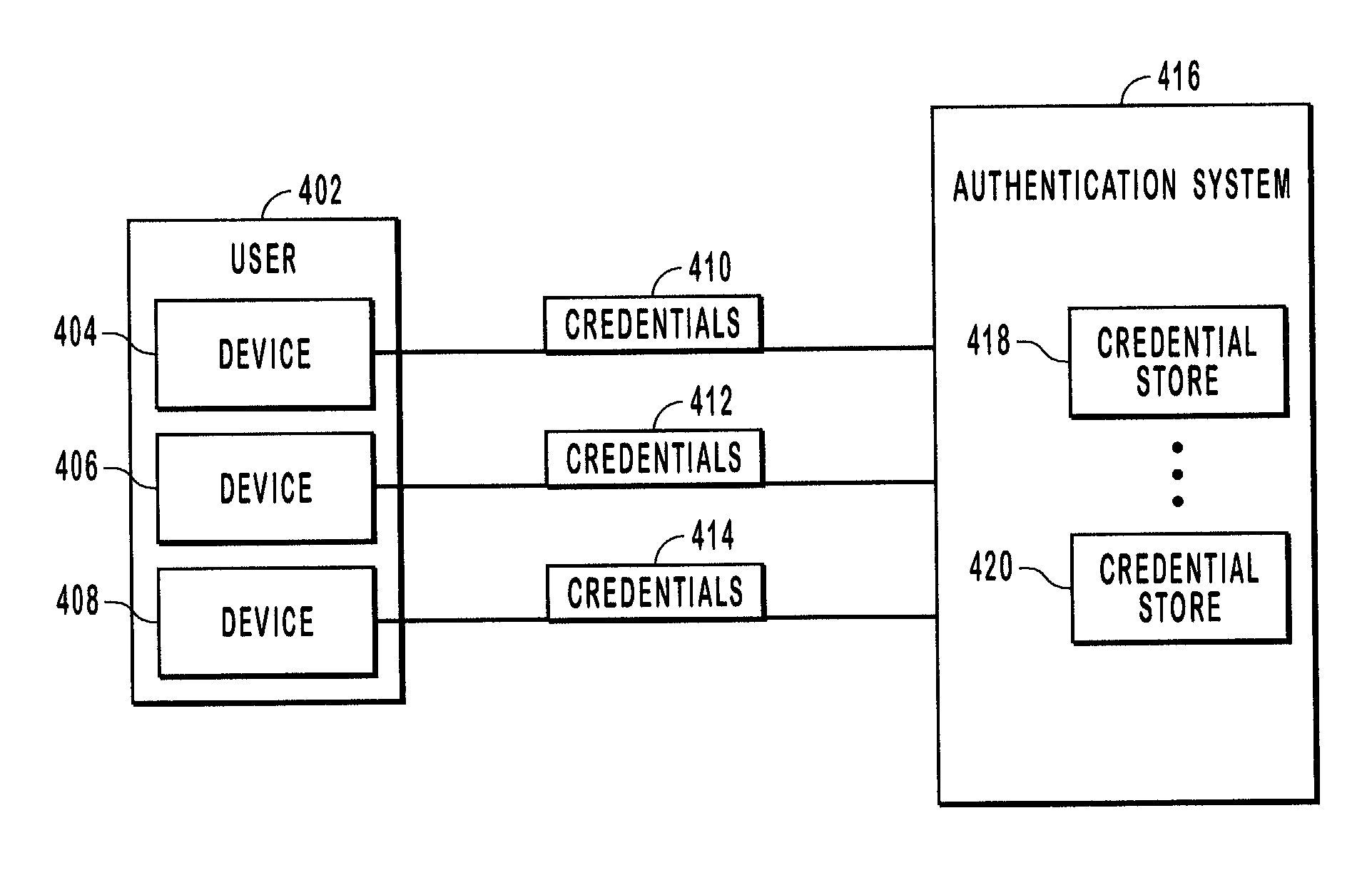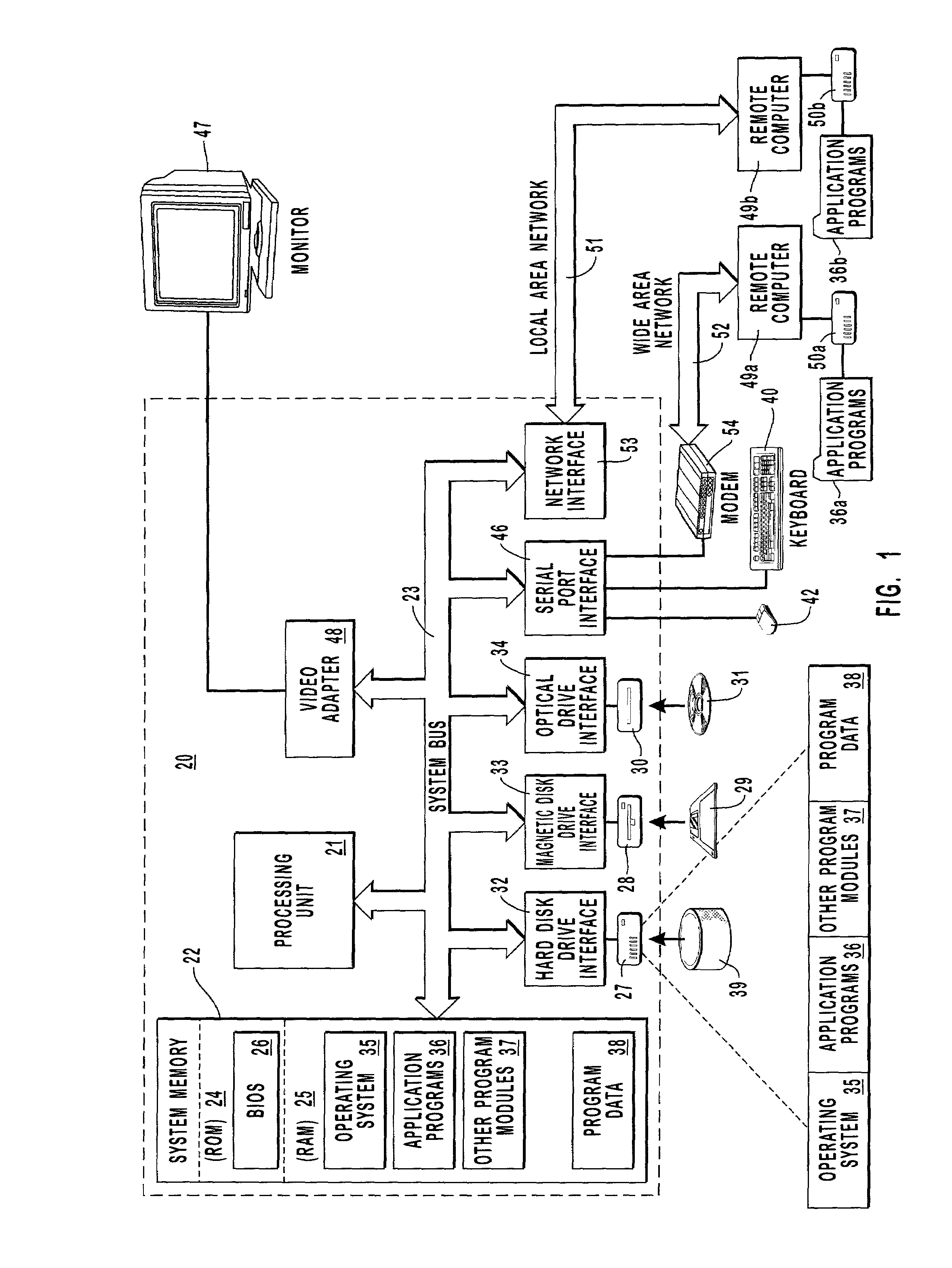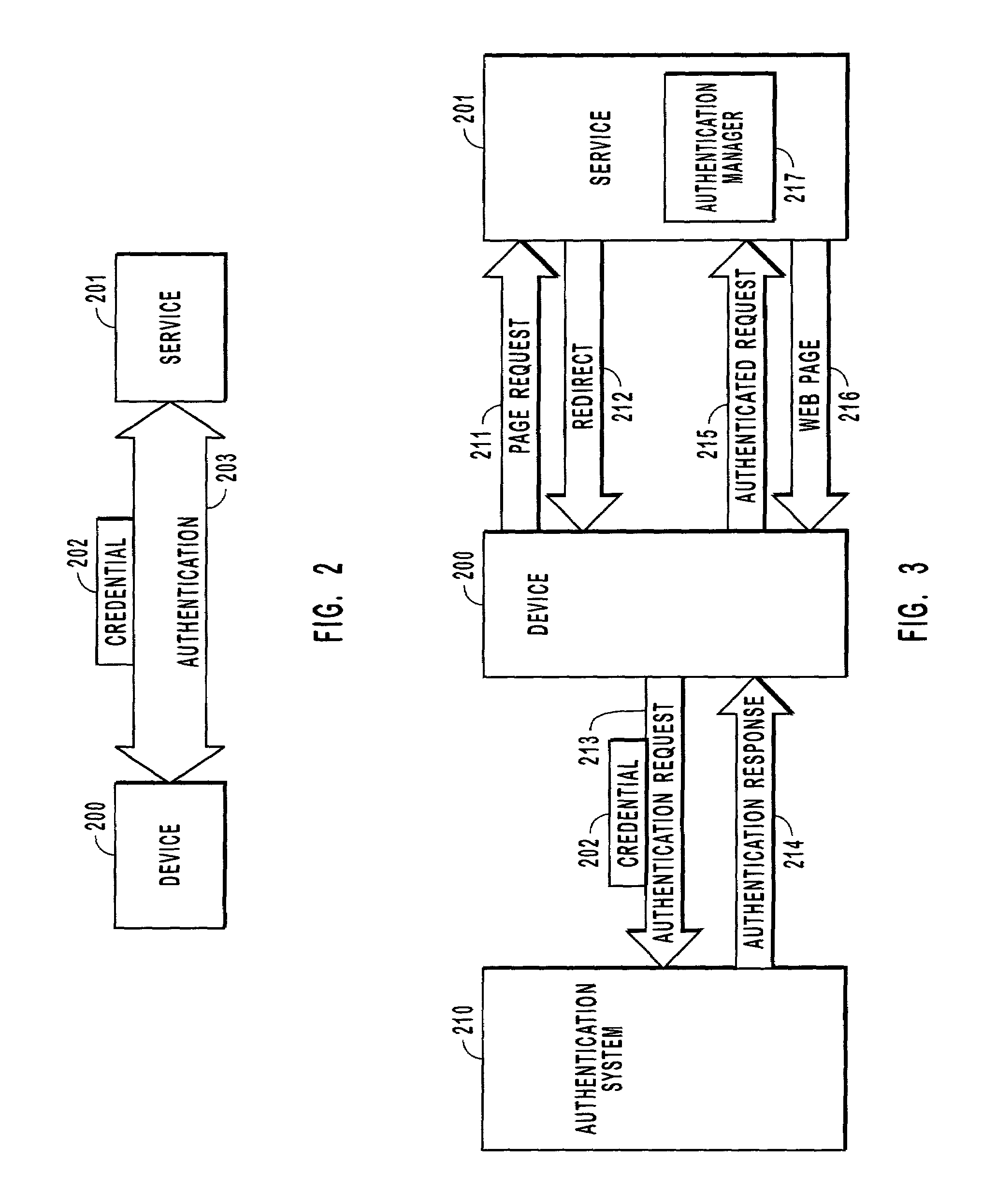Multiple credentials in a distributed system
a distributed system and multiple credentials technology, applied in digital data authentication, instruments, digital computers, etc., to achieve the effect of high security credentials and lower security levels
- Summary
- Abstract
- Description
- Claims
- Application Information
AI Technical Summary
Benefits of technology
Problems solved by technology
Method used
Image
Examples
Embodiment Construction
[0026]Computer based services (services), including Web portals, instant messaging, websites, telephony-based voice mail services and the like, are often accessed from various devices that have, for example, different data input techniques, security capabilities, and form factors. These services, regardless of the device used to access the services, often require that their users be authenticated and uniquely identified. User identification is accomplished by requiring the user to supply credentials, that are presumably only known to the user, to an authentication system that validates the credentials. As previously described, this presents some difficulty to the user because some credentials are particularly difficult to enter on some devices.
[0027]The present invention addresses the difficulty of accessing a computer-based service from different devices by providing an authentication system that supports multiple credentials across a distributed system. The complexity of managing ...
PUM
 Login to View More
Login to View More Abstract
Description
Claims
Application Information
 Login to View More
Login to View More - R&D
- Intellectual Property
- Life Sciences
- Materials
- Tech Scout
- Unparalleled Data Quality
- Higher Quality Content
- 60% Fewer Hallucinations
Browse by: Latest US Patents, China's latest patents, Technical Efficacy Thesaurus, Application Domain, Technology Topic, Popular Technical Reports.
© 2025 PatSnap. All rights reserved.Legal|Privacy policy|Modern Slavery Act Transparency Statement|Sitemap|About US| Contact US: help@patsnap.com



